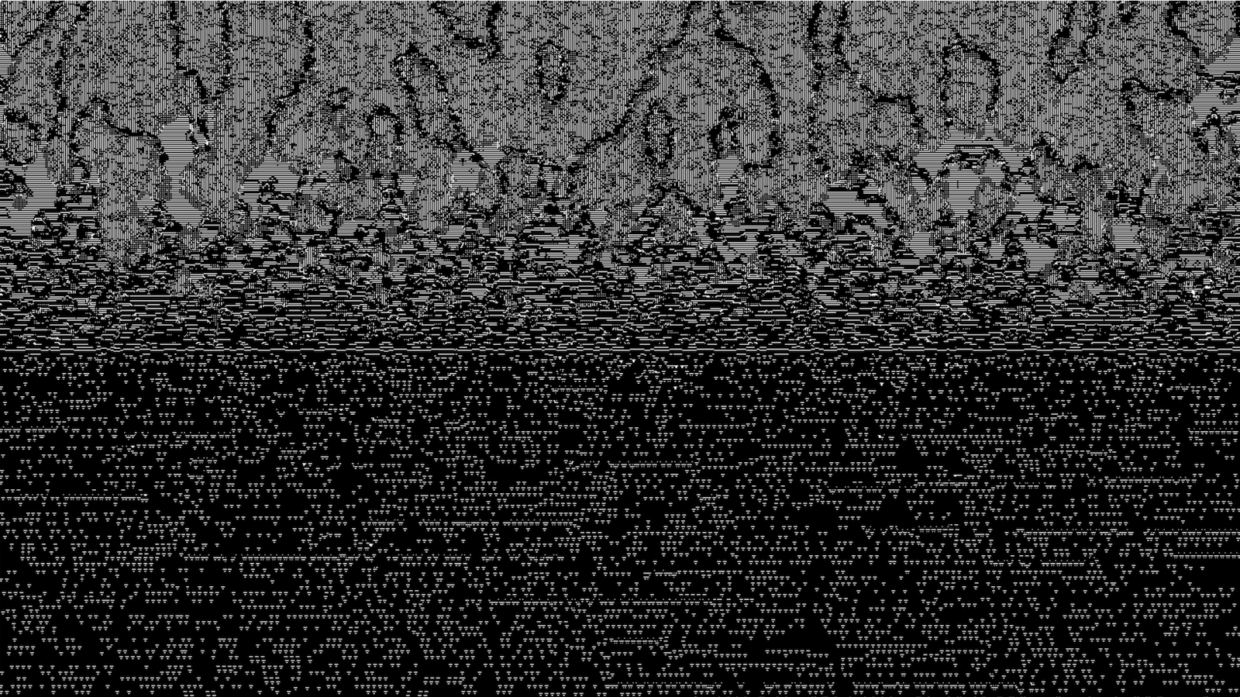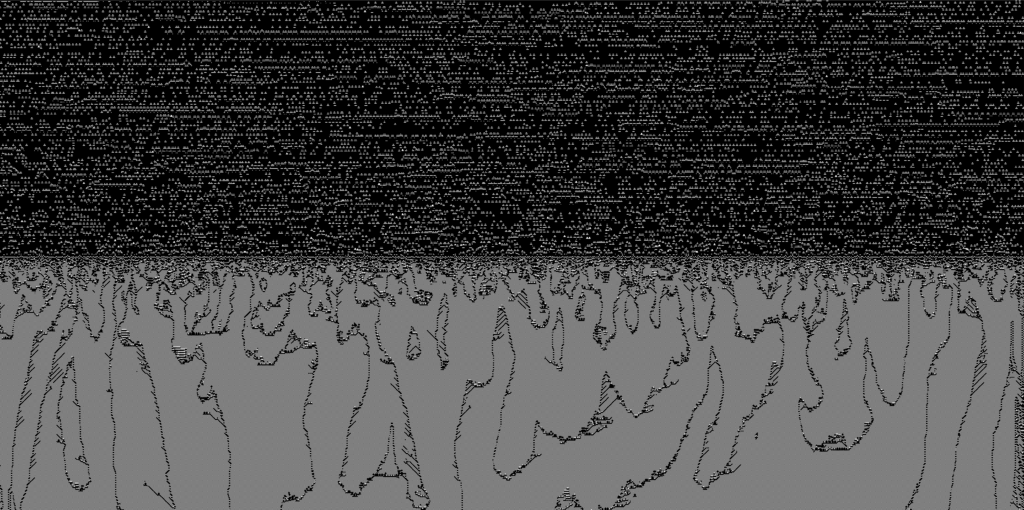Feral File has announced a new show, COLORS of NOISE, featuring new work by the German visual artist Kim Asendorf, launching May 18th. COLORS OF NOISE includes a series of 50 unique artworks minted on Ethereum, 47 of which will be on sale for 0.25 ETH.
Curated by Peggy Schoenegge, Asendorf’s works utilize the entire spectrum of sound, turning noise into an artistic experience. The “color” of noise refers to the frequency distributions that describe specific spectral properties. This concept is analogous to the idea of the color of light and refers, for example, to white, pink, blue, violet, red, or brown noise. The effect of each color depends on how it is used and the context in which it is applied; while white noise generates a flat spectrum on a frequency graph, helping a person to sleep, the sonic pink noise hue is deeper and promotes concentration, and brown noise enhances relaxation.
Drawing upon his expertise in programming, Asendorf has developed an algorithm that generates intricate and dynamic patterns of color-based noises. The algorithm processes these noises by shaping different frequencies, creating distinct properties of different colors. Sonic qualities are translated into an artistic display of vibrant meshes of lines that evolve and transform with the changing soundscape. By transforming the immaterial sound waves into pixelated lines in black and white, an abstract flickering image emerges that forms a moiré pattern.
The network of lines visualizes the audio, emphasizing its characteristics and materializing the colored noise of the sound. Visualizing sound waves in these abstract, pixelated lines creates intricate and dynamic patterns of color-based noises, such as pink noise, brown noise, and white noise. As different sounds have different effects, the listener is directly drawn into the audio-visual experience, immersing themselves into a multisensory artwork.
For over a decade, the pixel has been the main building block in Asendorf’s work, seemingly alive in his abstractions or rearranged in his iconic Pixel Sorting aesthetics. Asendorf works with conceptual strategies and generative systems to create abstract animations, images, and sculptures. His abstract visual systems are conceptually set and realized in algorithms that are open to a wide range of interpretations. He works on a per-pixel level to create worlds that mix simplicity with complexity and that allow the audience to develop a human-machine relationship.
We spoke with Kim about COLORS OF NOISE, the themes in his artistic practice, and this work specifically.
Can you tell us a little about your background and how you got started in the world of digital art and NFTs?
I have been playing with computers quite early, I went from gaming to music and graphic design. Finally I went to art school in 2006 and figured out that programming is the tool that leads me to new grounds and keeps me inspired the most. Since then automation, the internet and ’90s computer aesthetics have guided me.
Your work connects color and frequencies, representing this using pixelated lines. How would you describe your artistic style, and how does it translate into your work in the Colors of Noise Show?
I am playing excessively with pixels, looking for something I can not imagine. So mostly I define a concept, a set of rules, that hopefully lead me to something I haven’t seen before. For “Colors of Noise” I wanted to create an animation that gets its impulses directly from acoustic noise. Common practice in computer-generated art is to extract parameters from performance-optimized algorithms, for example from the very common Perlin Noise.
I found the approach to use the values of acoustic noise conceptually very exciting. Basically an audio-reactive animation, but without rhythms and melodies. Just a constant stream of noise. I wanted that concept and the actual signal to be visible. I took the waveform of the noise and placed it as the central element in the picture. The waveform becomes the trigger for the animation.
What themes or ideas are you exploring in Colors of Noise?
It is all about noise. I love that the sound of noise is mostly calming but also has so much energy. For me the work is a bridge from my interest in electronic music to my visual work.
Can you talk a bit about the role that the body in its technological extension is evident in your work as an artist?
Not sure what exactly you mean [by] body, but I want to create abstractions that become expressive. Open for interpretation, natively digital, adapt to any screen size, but also immersive when displayed on large screens. I always have LED walls in mind when creating a new work. A pixel should translate perfectly.
Looking to the future, how do you see the world of NFTs and digital art evolving, and how do you hope to continue contributing to that conversation?
NFTs brought many new people into digital art. They realized that art can give you something, that art can be felt. I love that and I’ll keep trying to speak to people through my work.
Finally, what do you hope viewers and collectors take away from this exhibition?
Noise.




